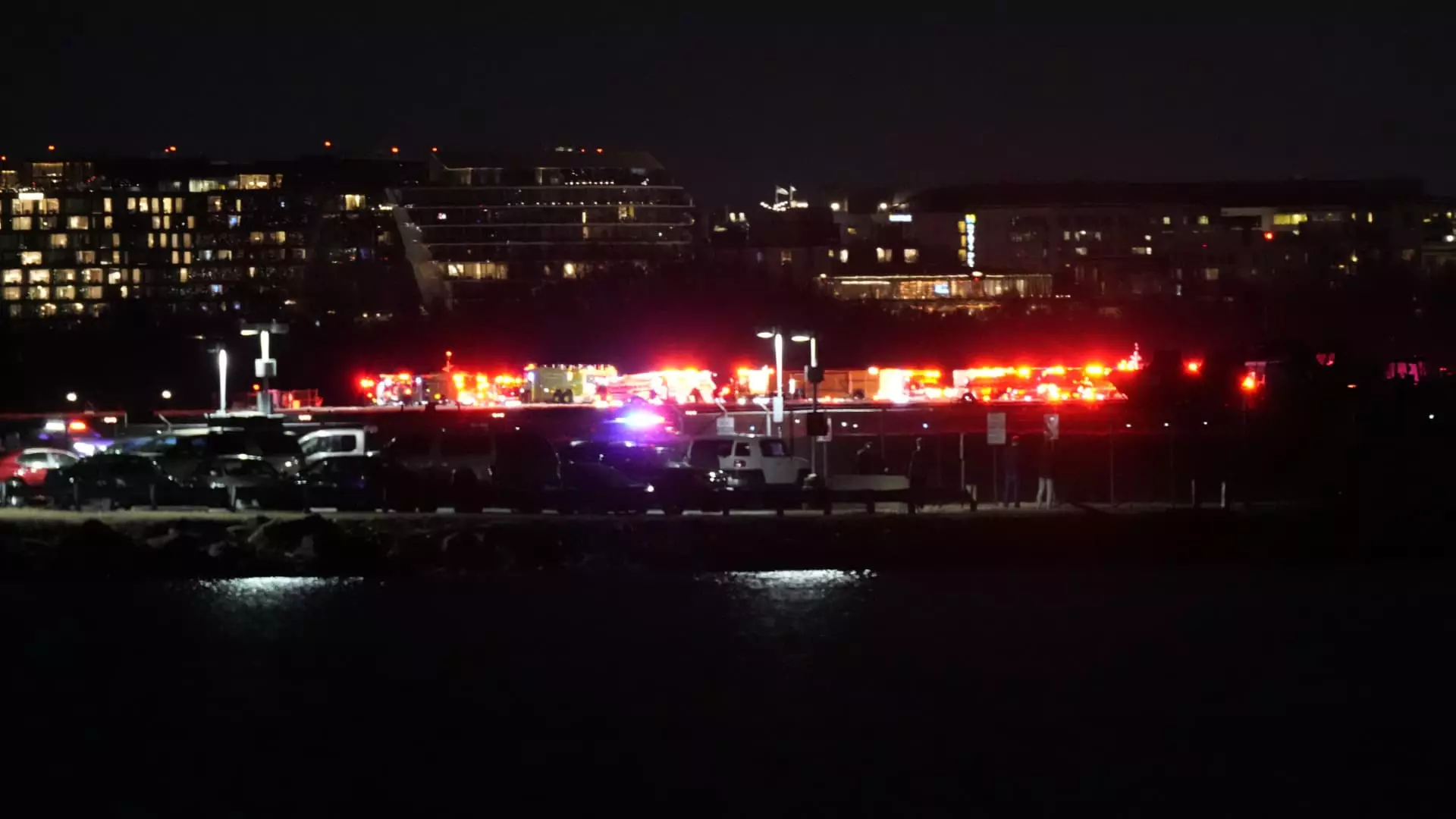On a seemingly ordinary Wednesday night, chaos erupted at Ronald Reagan Washington National Airport when an American Airlines regional jet collided with a Black Hawk military helicopter. The incident took place just moments before the CRJ700 aircraft, operating as American Eagle Flight 5342, was set to land. With 64 individuals on board, this accident marks a striking incident in aviation, reminiscent of the tragic air disasters the U.S. had almost forgotten in the last decade and a half.
The Federal Aviation Administration (FAA) promptly reported that the regional jet, which was returning from Wichita, Kansas, was at a mere 300 feet altitude when it struck the Sikorsky H-60 helicopter around 9 p.m. ET. As news of the collision spread, it triggered an immediate emotional response from families and friends of passengers, airline officials, and governmental authorities alike.
American Airlines CEO Robert Isom quickly addressed the incident, expressing deep concern for the individuals aboard Flight 5342. In a bid to convey solidarity and support, he and a “go-team” from the airline planned to head to Washington D.C. to assist in the ongoing emergency response efforts. The company also provided contact details for worried relatives, acknowledging the heavy emotional toll of such unforeseen tragedies.
While Reagan Washington National Airport swiftly closed its operations, overriding the typical hum of activity that characterizes the bustling travel hub, Transportation Secretary Sean Duffy, newly sworn into office, deemed the event a “tragedy” during a late-night press briefing. His observance underscores the profound impact of aviation safety standards, a critical focus in post-September 11 America.
Challenges Faced by First Responders
The immediate aftermath of the crash presented harrowing challenges for rescue workers. Both aircraft had submerged into the icy Potomac River, where rescuers contended with treacherous conditions including strong winds and frigid waters. This difficult terrain posed significant obstructions as they undertook the grim task of retrieving bodies from the river, reported by local news outlets as the hours progressed following the collision.
Furthermore, the U.S. military quickly confirmed that the downed helicopter was part of a training exercise operated out of nearby Fort Belvoir, Virginia. Officials from the Army corroborated their collaboration with local authorities, emphasizing the importance of transparency during such high-stake situations. Nonetheless, details about the occupants and the extent of casualties remained elusive during initial press conferences, increasing anxiety among families desperate for updates.
A Long-Awaited Focus on Aviation Safety
This tragic event has once again thrust aviation safety into the spotlight. For the last 15 years, the U.S. had enjoyed a relatively uninterrupted record of safety in commercial aviation, with no fatal crashes of passenger airlines since a 2009 incident in Buffalo, New York, where a Continental flight tragically concluded with fatalities both in-flight and on the ground.
As the FAA and National Transportation Safety Board initiated investigations promptly after the crash, many industry experts speculated on potential regulatory implications that could shape the future of flight operations. Since the 2009 incident, the FAA had rolled out stringent guidelines requiring comprehensive pilot training and adequate rest periods. Evaluating the root causes behind Wednesday’s calamity will be essential in restoring public confidence in air travel.
The ramifications of the crash resonated beyond immediate responders and airline officials, reaching the highest echelons of government. President Donald Trump, who had already begun to be briefed on the accident during the chaotic Wednesday night, acknowledged the valiant efforts of first responders in a public statement, emphasizing national empathy and collective grief.
Amidst the morose backdrop of the collision, the Air Line Pilots Association issued a statement expressing their shock and sorrow over the loss of life. The tragic nature of such an incident has reignited conversations about the importance of safety and preparedness in aviation – discussions that fade in the backdrop of long periods without similar incidents.
As the investigations ensue and details emerge, a solemn awareness interests stakeholders from airlines to government bodies – a reminder that aviation remains inherently complex despite advancements in safety measures. The aviation community will undoubtedly learn from this episode, ensuring that it contributes to the mission of safeguarding lives while traversing the skies.


Leave a Reply